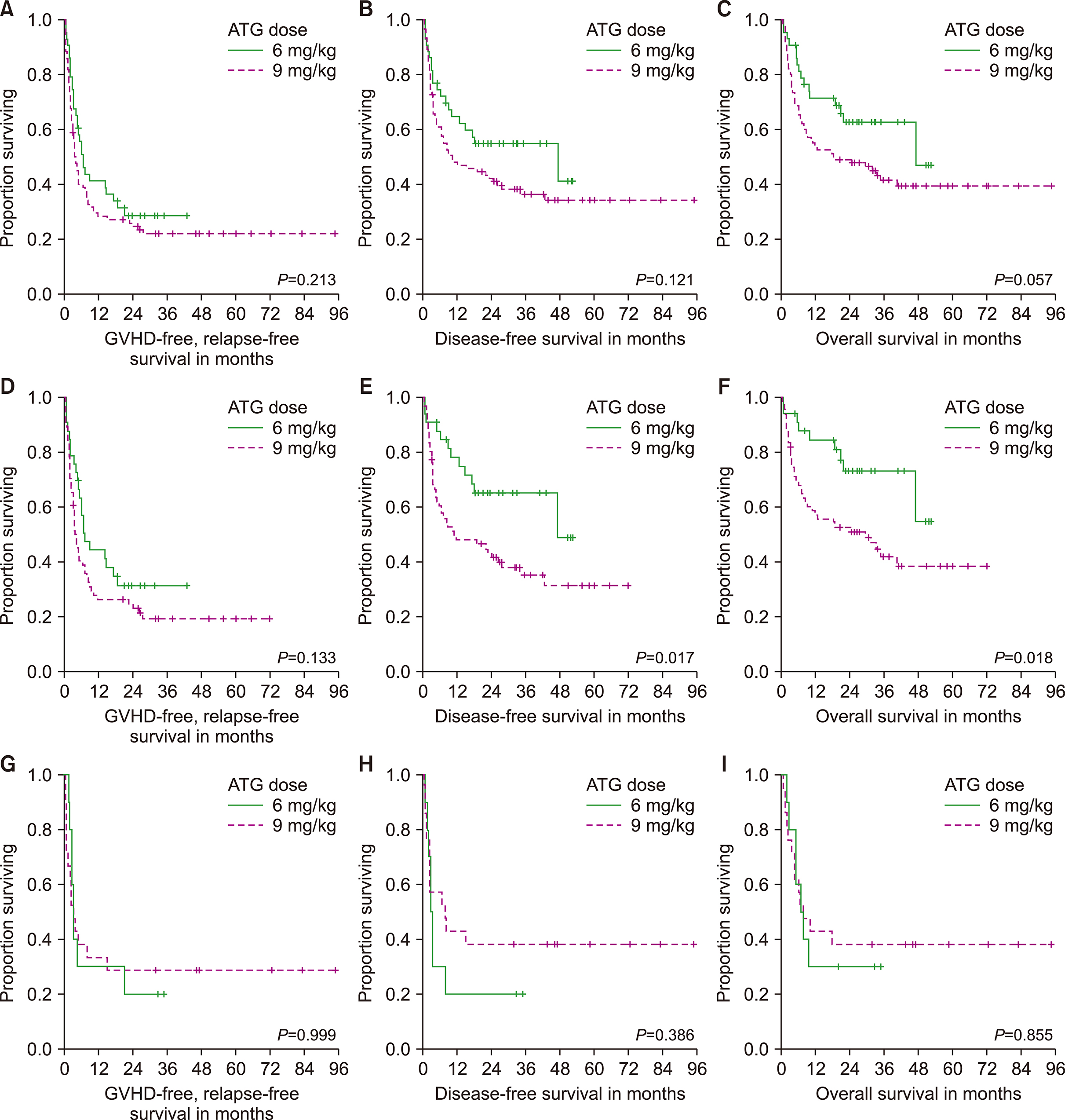Blood Res.
2019 Dec;54(4):290-295. 10.5045/br.2019.54.4.290.
Differential impact of anti-thymocyte globulin dosing by disease risk index in alternative donor peripheral blood stem cell transplantation in patients with acute leukemia or myelodysplastic syndrome after reduced intensity conditioning
- Affiliations
-
- 1Department of Internal Medicine, Seoul National University Hospital, Seoul, Korea. stephano.dyshin@gmail.com
- 2Center for Medical Innovation, Biomedical Research Institute, Seoul National University Hospital, Seoul, Korea.
- 3Cancer Research Institute, Seoul National University College of Medicine, Seoul, Korea.
- 4Department of Internal Medicine, Seoul National University Bundang Hospital, Seongnam, Korea.
- KMID: 2466598
- DOI: http://doi.org/10.5045/br.2019.54.4.290
Abstract
- No abstract available.
MeSH Terms
Figure
Reference
-
1. Arai S, Arora M, Wang T, et al. Increasing incidence of chronic graft-versus-host disease in allogeneic transplantation: a report from the Center for International Blood and Marrow Transplant Research. Biol Blood Marrow Transplant. 2015; 21:266–274.2. Baron F, Mohty M, Blaise D, et al. Anti-thymocyte globulin as graft-versus-host disease prevention in the setting of allogeneic peripheral blood stem cell transplantation: a review from the Acute Leukemia Working Party of the European Society for Blood and Marrow Transplantation. Haematologica. 2017; 102:224–234.
Article3. Kumar A, Reljic T, Hamadani M, Mohty M, Kharfan-Dabaja MA. Antithymocyte globulin for graft-versus-host disease prophylaxis: an updated systematic review and meta-analysis. Bone Marrow Transplant. 2019; 54:1094–1106.
Article4. Remberger M, Ringden O, Hägglund H, et al. A high antithymocyte globulin dose increases the risk of relapse after reduced intensity conditioning HSCT with unrelated donors. Clin Transplant. 2013; 27:E368–E374.
Article5. Chang YJ, Wang Y, Mo XD, et al. Optimal dose of rabbit thymoglobulin in conditioning regimens for unmanipulated, haploidentical, hematopoietic stem cell transplantation: Long-term outcomes of a prospective randomized trial. Cancer. 2017; 123:2881–2892.
Article6. Kim T, Choi Y, Lee JH, et al. Clinical impact of anti-thymocyte globulin on survival and graft-versus-host disease in patients undergoing human leukocyte antigen mismatched allogeneic stem cell transplantation. Korean J Intern Med. 2019; [Epub ahead of print].
Article7. Valcarcel D, Martino R, Caballero D, et al. Sustained remissions of high-risk acute myeloid leukemia and myelodysplastic syndrome after reduced-intensity conditioning allogeneic hematopoietic transplantation: chronic graft-versus-host disease is the strongest factor improving survival. J Clin Oncol. 2008; 26:577–584.
Article8. Thepot S, Zhou J, Perrot A, et al. The graft-versus-leukemia effect is mainly restricted to NIH-defined chronic graft-versus-host disease after reduced intensity conditioning before allogeneic stem cell transplantation. Leukemia. 2010; 24:1852–1858.
Article
- Full Text Links
- Actions
-
Cited
- CITED
-
- Close
- Share
- Similar articles
-
- Similar transplant outcomes between haploidentical and unrelated donors after reduced-intensity conditioning with busulfan, fludarabine, and anti-thymocyte globulin in patients with acute leukemia or myelodysplastic syndrome
- The Case Report of a Child with High-Risk Acute Lymphoblastic Leukemia, Treated with Allogenic Peripheral Blood Stem Cell Transplantation
- Unrelated Cord Blood Transplantation Using Non-TBI Conditioning Regimen in a Child with Fanconi Anemia
- Is Treosulfan-Based Conditioning Attractive as a Reduced-Intensity Conditioning Regimen in Korea?
- A Case of Double-unit Cord Blood Transplantation in Primary Refractory Acute Myeloid Leukemia


